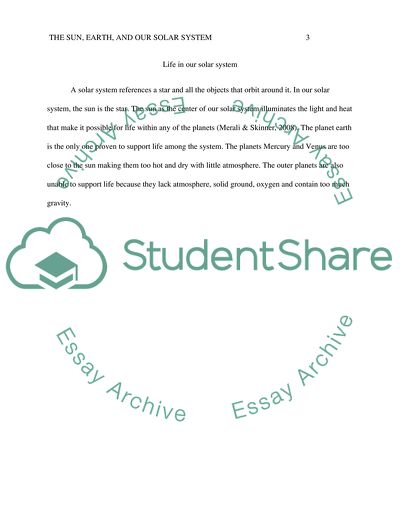The evolution of the Earth, the Sun, the Moon, planets, and other Essay. Retrieved from https://studentshare.org/physics/1659178-the-evolution-of-the-earth-the-sun-the-moon-planets-and-other-bodies-in-the-universe
The Evolution of the Earth, the Sun, the Moon, Planets, and Other Essay. https://studentshare.org/physics/1659178-the-evolution-of-the-earth-the-sun-the-moon-planets-and-other-bodies-in-the-universe.


